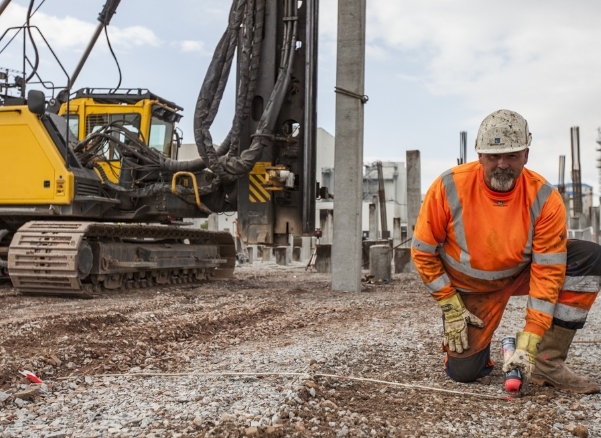10 Advantages of Driven Piling
Categories:
Company NewsThe advantages of driven piling are clear to see and UK construction must start to embrace it.
Definition of a Driven Pile:
A driven pile is a relatively long, slender column, provided to offer support or to resist forces, made of preformed material having a predetermined shape and size that can be physically inspected prior to and during installation, which is installed by impact hammering, vibrating or pushing into the earth.
Aarsleff Ground Engineering, a specialist ground engineering and piling contractor, understand that Driven piles are a total engineering solution. The design, installation and quality assurance that are a part of each driven pile combine to eliminate guesswork and produce a known, reliable and cost-effective product to its client that can accommodate a wide variety of subsurface conditions.
Driven Piling Installation Method:
Piles may be of timber, thick wall steel tubes, thin wall bottom driven piles, H-section, Sheet or concrete. When the piles are of concrete, they are precast. Aarsleff Ground Engineering can drive all of the aforementioned pile types.
For more information about Aarsleff Ground Engineering or to send in your enquiry, call 01636 611140 and speak to a member of our expert team today, or drop us an email.
10 Advantages
- Piles can be precast to the required specifications.
- Piles of various size, length, and shape can be made in advance and used at the site. As a result, the progress of the work will be rapid.
- A pile driven into granular soil compacts the adjacent soil mass and as a result, the bearing capacity of the pile is increased.
- The work is neat and clean and creates no spoil arisings. The supervision of work at the site can be reduced to a minimum. The storage space required is very much less.
- Driven piles may conveniently be used in places where it is advisable not to drill holes for fear of meeting groundwater under pressure.
- Driven piles are the most favoured for works over water such as piles in wharf structures or jetties.
- Driven piles maintain their shape during installation. They do not bulge in soft ground conditions and are typically not susceptible to damage from the installation of subsequent piles.
- Driven piles require no curing time and can be driven in natural sequence rather than skipping alternate piles, thus minimising the moving of the equipment and speeding up installation time.
- The equipment and installation methods are time-tested and well proven. Advances in materials, equipment, methods, and testing continually combine to improve the efficiency of driven piles.
- Fewer traffic movements are required to and from a site when compared to alternate piling methods.
Resources
The Latest. News, podcasts & projects






